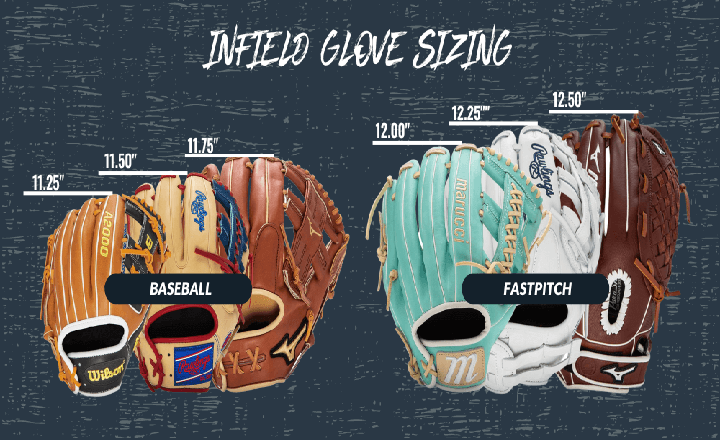Baseball, often dubbed America’s favorite pastime, holds a special place in the hearts of many, especially the youth who dream of becoming the next baseball superstar.
Central to the game’s fundamentals is the youth baseball glove, an essential tool that not only enhances performance but also fosters a deep connection with the sport.
In this comprehensive guide, we will delve into the intricacies of best youth baseball gloves, discuss what makes a glove great, and provide insights into some of the top choices available today.
What Makes a Great Youth Baseball Glove?
Youth baseball gloves are designed with specific considerations in mind, tailored to fit smaller hands and cater to developing skills. Here are some key factors to consider when choosing the best youth baseball glove:
1. Size and Fit
- Proper Fit: A glove should fit snugly on the player’s hand without being too tight or too loose. It should feel comfortable and allow for easy movement.
- Youth-Specific Design: These gloves are typically smaller and lighter than adult gloves, making them easier for young players to control and maneuver.
2. Material and Construction
- Quality Leather: Full-grain leather or premium synthetic materials are preferred for durability and comfort.
- Webbing and Padding: The type of webbing (e.g., closed, open) and amount of padding can affect catching ability and comfort.
3. Position-Specific Features
- Infield vs. Outfield: Infield gloves are smaller with shallower pockets for quick transfers, while outfield gloves are larger with deeper pockets for catching fly balls.
- Pitcher and Catcher Gloves: These are specialized for their respective positions, with features to aid in pitching or catching.
4. Brand and Reputation
- Trusted Brands: Brands like Rawlings, Wilson, Mizuno, and Easton are known for their quality youth baseball gloves.
- Reviews and Recommendations: Checking reviews and seeking recommendations from coaches or experienced players can help in making an informed decision.
5. Budget Considerations
- Value for Money: While quality comes at a price, there are excellent youth baseball gloves available at various price points. Setting a budget beforehand can narrow down options.
Best Youth Baseball Glove Size Chart
Age Range: 5-7 years old
- Glove Size: 9 to 10.5 inches
- Position: All positions (Utility glove)
Age Range: 8-10 years old
- Glove Size: 10.5 to 11.5 inches
- Position: Infield (Second base, shortstop, third base), Pitcher
Age Range: 11-13 years old
- Glove Size: 11 to 12 inches
- Position: Infield (Shortstop, third base), Pitcher, Outfield (Left field, center field, right field)
Age Range: 14 years old and up
- Glove Size: 11.5 to 12.5 inches
- Position: Infield (Shortstop, third base), Pitcher, Outfield (Left field, center field, right field)
Top Youth Baseball Gloves on the Market

Choosing the best youth baseball glove involves considering specific needs and preferences. Here are some of the top-rated gloves currently available:
1. Rawlings Players Series Youth Baseball Glove
- Features: Lightweight and durable design, basket-weave web pattern for flexibility.
- Ideal For: Beginners and younger players looking for comfort and control.
2. Wilson A2000 Super Skin Youth Baseball Glove
- Features: Premium Pro Stock leather with SuperSkin for lightweight feel and durability.
- Ideal For: Serious young players looking for a high-performance glove.
3. Mizuno Prospect Power Close Youth Baseball Glove
- Features: Power Close technology for easier closure, butter-soft palm liner for comfort.
- Ideal For: Players transitioning from beginner to intermediate levels.
4. Easton Future Elite Youth Series Baseball Glove
- Features: Ultra-soft Hog Hide leather, smaller hand openings for youth players.
- Ideal For: Those seeking a balance between quality and affordability.
Difference Between an Infield and Outfield Glove

The difference between an infield and outfield glove lies primarily in their size, design, and intended use, tailored to the specific demands of each position on the baseball field:
Infield Glove:
- Size: Infield gloves are generally smaller compared to outfield gloves. They typically range from 10 to 11.5 inches in length. The smaller size allows infielders to quickly retrieve and transfer the ball.
- Pocket Depth: Infield gloves have a shallower pocket. This design feature helps infielders quickly scoop up ground balls and make swift transfers for throws to bases.
- Webbing: Infield gloves often feature an open web design (such as I-web or H-web). The open webbing allows dirt and debris to fall through easily and provides quicker ball visibility when fielding.
- Versatility: Infield gloves are versatile enough to handle a variety of infield positions like shortstop, second base, third base, and sometimes even pitcher where quick reaction times and precise ball control are crucial.
- Control: The smaller size and shallower pocket of infield gloves provide better control for infielders, enabling them to handle ground balls and execute double plays efficiently.
Outfield Glove:
- Size: Outfield gloves are larger than infield gloves, typically ranging from 11.5 to 12.5 inches in length. The larger size helps outfielders cover more ground and reach for fly balls.
- Pocket Depth: Outfield gloves have a deeper pocket compared to infield gloves. The deeper pocket helps outfielders secure and hold onto fly balls more securely.
- Webbing: Outfield gloves often feature a closed web design (such as trapeze or basket web). The closed webbing provides additional support and stability for catching fly balls and helps shield the ball from the sun.
- Specialization: Outfield gloves are designed specifically for outfield positions (left field, center field, right field). They are optimized for catching fly balls, making long throws, and providing maximum coverage in the outfield.
- Padding: Outfield gloves may have more padding in the palm area to cushion the impact of catching hard-hit balls and high-velocity throws from the outfield.
Conclusion
Choosing the best youth baseball glove involves balancing factors like size, fit, material, and position-specific features. By understanding these considerations and exploring top-rated options, you can find a glove that not only enhances performance but also fosters a deeper love for the game.
Whether your child dreams of playing in the majors or simply enjoys playing with friends, investing in a quality youth baseball glove is a decision that can make a significant difference in their baseball journey.
